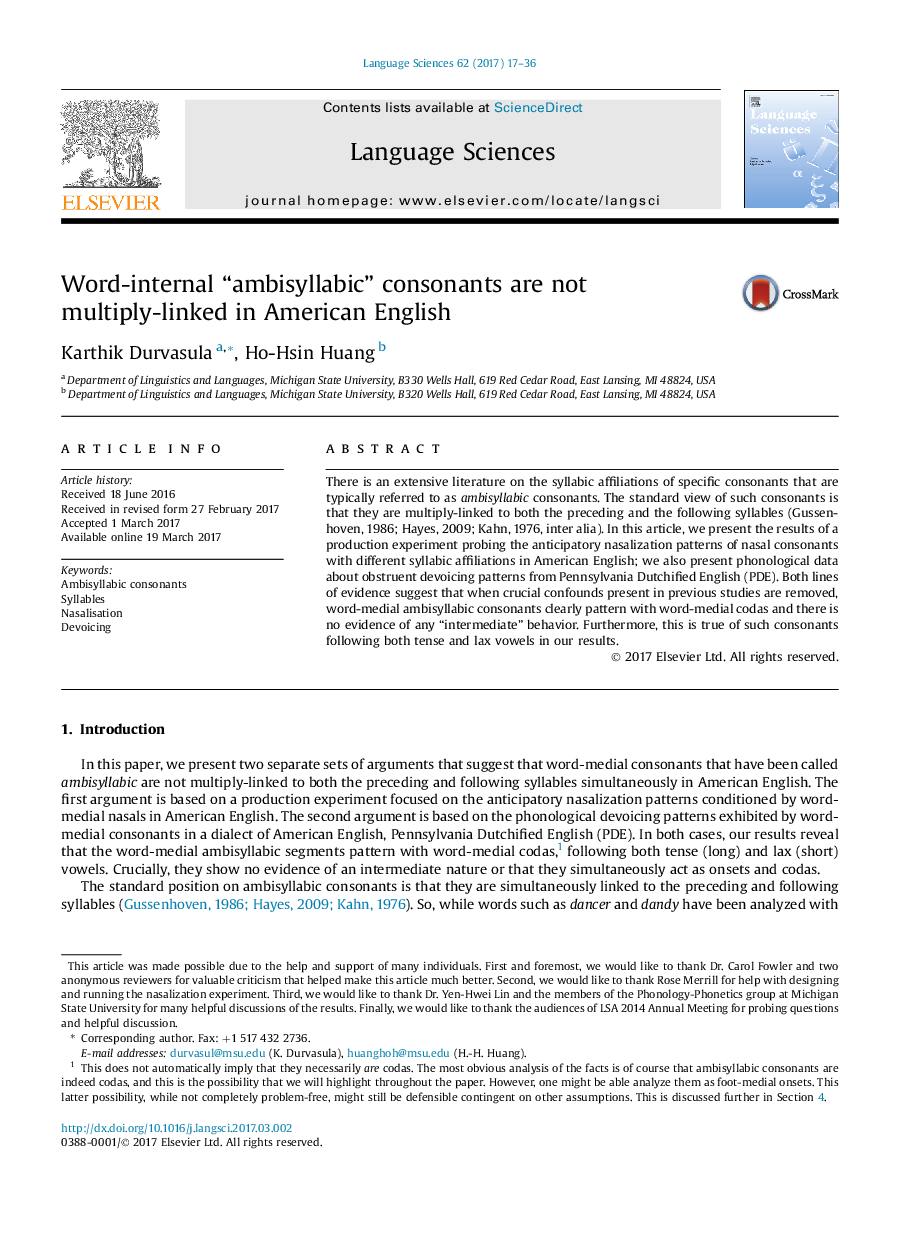| Article ID | Journal | Published Year | Pages | File Type |
|---|---|---|---|---|
| 5124545 | Language Sciences | 2017 | 20 Pages |
â¢Syllabic affiliation of ambisyllabic consonants after tense/lax vowels was probed.â¢American English vowel nasalization patterns suggest they pattern with codas.â¢Pennsylvania Dutchified English devoicing suggests again they pattern with codas.â¢No evidence of multiple-linkage as proposed by standard analyses.
There is an extensive literature on the syllabic affiliations of specific consonants that are typically referred to as ambisyllabic consonants. The standard view of such consonants is that they are multiply-linked to both the preceding and the following syllables (Gussenhoven, 1986; Hayes, 2009; Kahn, 1976, inter alia). In this article, we present the results of a production experiment probing the anticipatory nasalization patterns of nasal consonants with different syllabic affiliations in American English; we also present phonological data about obstruent devoicing patterns from Pennsylvania Dutchified English (PDE). Both lines of evidence suggest that when crucial confounds present in previous studies are removed, word-medial ambisyllabic consonants clearly pattern with word-medial codas and there is no evidence of any “intermediate” behavior. Furthermore, this is true of such consonants following both tense and lax vowels in our results.
